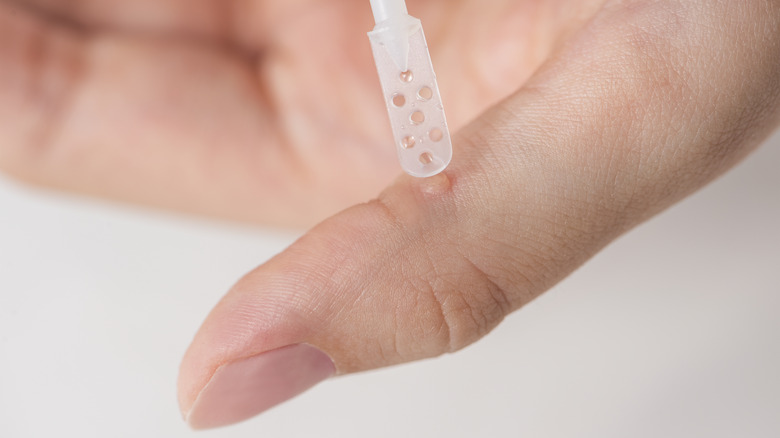Can Warts Come Back After Treatment?
Based on their appearance, you might guess that warts stem from a fungal infection. However, they're actually the result of a viral infection, according to experts at Dermatology Consultants of Frisco. More specifically, human papillomavirus, or HPV as it's often called for short. The virus works by infecting the epidermis and prompts an overgrowth of cells on the skin's surface, creating a wart. Most often, they can be found on the hands and feet.
While many of us may picture a cough or a sneeze as the main way in which virus particles are transferred between people, the type of HPV responsible for warts operates differently. Rather, warts can develop from direct skin contact or even from touching contaminated surfaces. This includes door handles, computer keyboards, and wet floors at public pools.
While there are different treatment options available for wart removal, warts can be headstrong when it comes to sticking around. With some treatment methods in particular, it may be months before you begin to see results. Even then, there is unfortunately no guarantee that warts may be gone for good.
Medical and at-home treatments for warts
First, let's review some of the available treatment options for warts, as this will help us better understand why they may not always be effective. Freezing warts with liquid nitrogen is one common treatment method utilized by physicians (per Dermatology Consultants of Frisco). After about seven days, the wart will fall off on its own following the procedure. Alternatively, your doctor may use a bleomycin injection to kill off the infection. Cantharidin is another medication treatment option for patients, which can be applied topically to stimulate the formation of a blister around the wart. After about a week, the blister will have uprooted the wart from the skin, allowing it to fall off.
Although it may take more time before the effects start to take hold, at-home remedies such as the use of clear nail polish, salicylic acid patches, or even tape may also be helpful in treating warts. Yes, tape. Researchers from a 2002 study published in JAMA Pediatrics looked at the effectiveness of duct tape versus cryotherapy for the treatment of warts in 51 individuals between the ages of 3 and 22. Out of the 26 patients assigned to wear duct tape on their warts for up to two months, 22 had their warts clear up entirely, compared to only 15 out of the total 25 patients in the cryotherapy group.
What to do if warts return
In the event that no other treatment methods have been effective, surgical removal of the wart using an electric needle or laser may be required (via Dermatology Consultants of Frisco). However, if warts continue to make an appearance even after treatment, it means that the virus was not entirely eliminated from the skin. Alternatively, warts may also resurface if one's immune system is struggling to combat the infection. This can often be the case with children, whose immune systems are still developing. Research shows that warts affect as many as 10% of pediatric patients (via JAMA Pediatrics). If you struggle with recurrent warts, be sure to speak with your doctor.
If you notice the development of a wart, no need to panic. For those with a healthy immune system, warts may very well take care of themselves. However, this doesn't mean one should neglect treatment, otherwise, you run the risk of spreading. The American Academy of Dermatology Association (AAD) advises keeping your wart covered during the course of treatment and always washing your hands after direct contact with the area. Additionally, refrain from shaving a wart, especially if you're using the same razor on other parts of the body. Because the virus enters the body through cuts in the skin, you don't want to pave the way for HPV to make the jump from one area to another.



